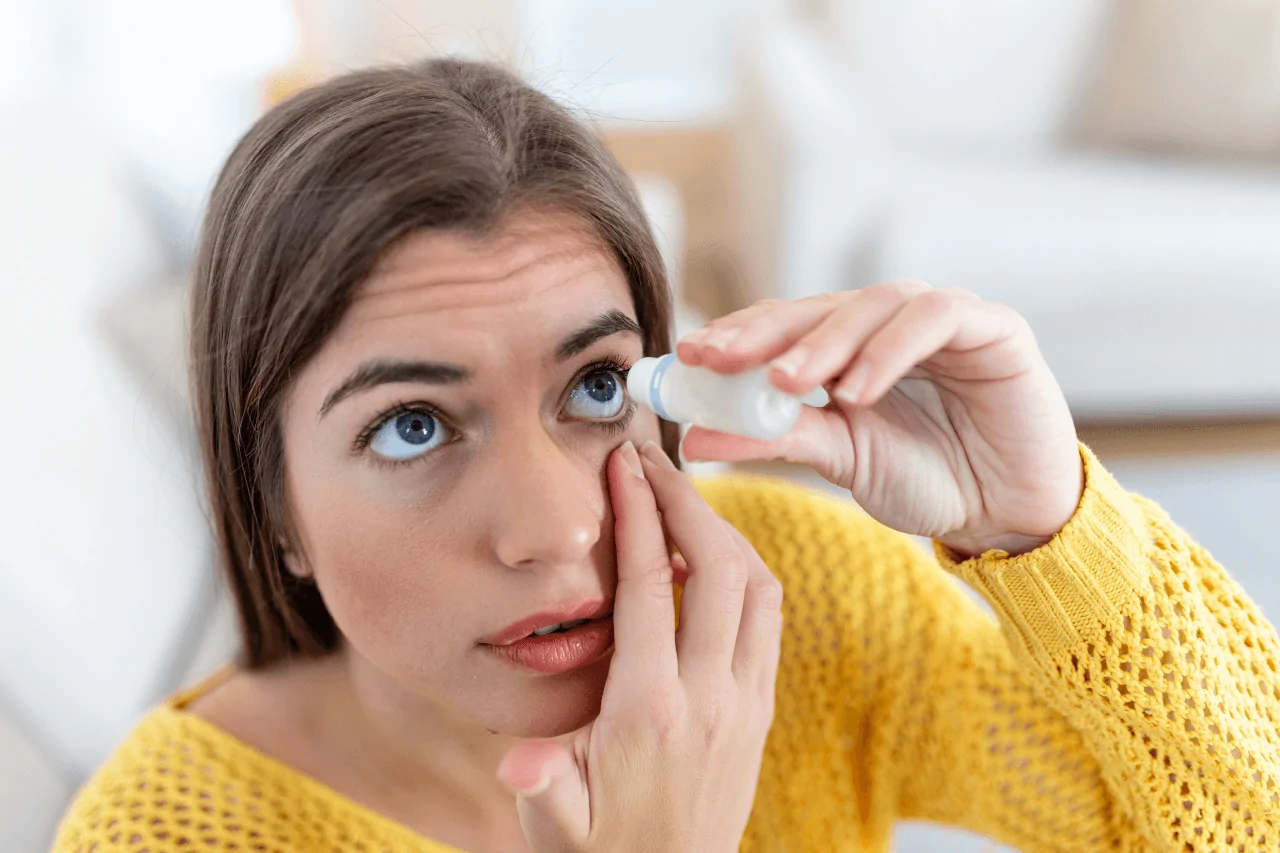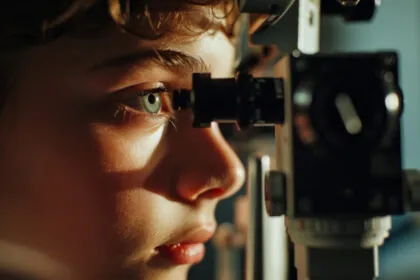Symptoms
In the early stages of most types of Glaucoma, there are often no noticeable symptoms. This is why regular eye exams are crucial for early detection. As glaucoma progresses, symptoms can vary depending on the type and severity of the condition.
Treatment
The treatment of glaucoma aims to lower intraocular pressure (IOP) to prevent further damage to the optic nerve and preserve vision. The specific treatment approach depends on the type and severity of Glaucoma. Here are some common methods used for treating Glaucoma:
- Medications (Eye Drops):
These are often the first line of treatment for Glaucoma. There are several types of eye drops available, each with a different mechanism of action. These drops help to either reduce the production of aqueous humor (fluid in the eye) or increase its drainage to lower IOP. Some common classes of glaucoma eye Drops include beta-blockers, prostaglandin analogs, alpha agonists, and carbonic anhydrase inhibitors.
- Laser Therapy:
- Laser Trabeculoplasty: This procedure uses a laser to improve the drainage of aqueous humor by treating the drainage angle. It is often used in open-angle glaucoma.
- Laser Iridotomy: This is used to treat angle-closure glaucoma by creating a small hole in the iris to improve the flow of aqueous humor.
- Cyclophotocoagulation: This laser treatment targets the ciliary body to reduce its ability to produce aqueous humor. It’s usually reserved for more advanced cases of Glaucoma.
- Surgery:
- Trabeculectomy: In this surgical procedure, a new drainage channel is created to allow aqueous humor to drain out of the eye, reducing IOP.
- Glaucoma Drainage Implant (Tube Shunt): A small tube is inserted into the eye to create a pathway for fluid drainage, helping to lower IOP.
- MINIMALLY Invasive Glaucoma Surgery (MIGS): These are new surgical techniques that offer a less invasive approach to lowering IOP. Examples include micro stent implantation and canaloplasty.
- Cyclodialysis: This procedure involves detaching a portion of the ciliary body to reduce aqueous humor production.
- Combination Therapy:
Some individuals may require a combination of medications, laser therapy, and surgery to effectively control their IOP.
The choice of treatment depends on factors such as the type of glaucoma, the severity of the condition, the patient’s overall health, and their ability to adhere to treatment regimens. It’s important to note that while treatment can help slow down the progression of glaucoma, any vision loss that occurs prior to treatment is usually irreversible. This underscores the importance of early detection and ongoing management to prevent further damage.
Regular follow-up visits with an eye care professional are essential to monitor the effectiveness of treatment and make any necessary adjustments. If you have been diagnosed with glaucoma or are at risk, it’s important to work closely with your eye doctor to develop a personalized treatment plan that suits your specific needs.
Want to protect your eyes from Glaucoma? Here are some precautions
While there is no guaranteed way to prevent glaucoma, there are certain lifestyle choices and habits that may help reduce the risk of developing the condition or delay its onset. Here are some tips that may be beneficial:
Comprehensive eye exams are crucial for the early detection and management of glaucoma. Adults should have regular eye check-ups, especially if they have a family history of glaucoma or other risk factors.
Be aware of your family history of eye conditions, as well as other risk factors such as age, ethnicity (African, Hispanic, and Asian descent are at higher risk), and certain medical conditions (diabetes, high blood pressure).
Maintain a healthy weight: Obesity and excessive weight can increase the risk of glaucoma.
Eat a balanced diet: Include a variety of fruits, vegetables, whole grains, lean proteins, and healthy fats. Some studies suggest that antioxidant-rich foods (like green leafy vegetables) might have a protective effect on the eyes.
Drinking enough water may help maintain eye health.
Excessive caffeine consumption might increase intraocular pressure in some people.
Engaging in regular physical activity has been associated with better eye health. Exercise can help improve blood circulation and overall well-being.
Wear sunglasses: UV protection may help prevent damage to the eyes from the sun’s harmful rays.
Use protective eyewear: If you’re engaged in activities that could cause eye injury, such as sports or certain professions, use appropriate eye protection.
Smoking has been linked to an increased risk of developing Glaucoma and other eye conditions. Quitting smoking can have positive effects on your overall eye health.
- Manage medical conditions:
Conditions like diabetes and high blood pressure can increase the risk of glaucoma. Properly managing these conditions through lifestyle changes and medical treatment can help reduce the risk.
- Limit alcohol consumption:
Excessive alcohol consumption may affect eye health and increase the risk of glaucoma.
Chronic stress might contribute to eye health problems. Engaging in stress-reduction techniques like meditation, yoga, and deep breathing can be beneficial.
If you are diagnosed with any eye conditions or medical issues that can impact your eye health, follow your doctor’s advice and treatment recommendations.
Conclusion
Glaucoma is a complex group of eye conditions that can lead to irreversible vision loss if left untreated. While the road to prevention is not definitive, understanding its various types, recognizing its subtle symptoms, and embracing a proactive approach to eye health can make a significant difference. Regular eye exams, especially for those at high risk, remain the cornerstone of early detection and effective management. By being informed about the different types of glaucoma, its symptoms, and available treatments, individuals can take proactive steps to safeguard their vision and overall well-being.
Remember, our eyes are invaluable, and preserving their health requires a commitment to healthy lifestyle choices, regular check-ups, and following medical advice. Glaucoma may present challenges, but armed with knowledge and a collaborative effort with eye care professionals, we can navigate these challenges and work towards a brighter, clearer future for our vision.
FAQs
What is Glaucoma?
Glaucoma is a group of eye conditions that can damage the optic nerve, causing vision loss if not treated.
What causes Glaucoma?
The exact causes aren’t always clear, but high eye pressure is a common factor. Other factors like genetics and age also play a role.
Are there different types of Glaucoma?
Yes, there are several types, including open-angle, angle-closure, normal-tension, and secondary glaucoma.
What are the symptoms of Glaucoma?
Early stages often have no symptoms. As it progresses, symptoms can include peripheral vision loss, halos around lights, and eye pain.
Can Glaucoma be prevented?
While prevention is challenging, healthy habits like regular exercise, not smoking, and managing medical conditions can help lower the risk.





